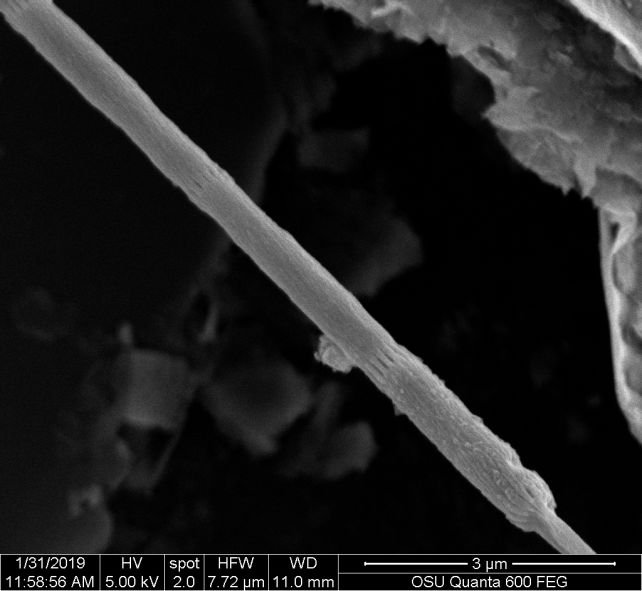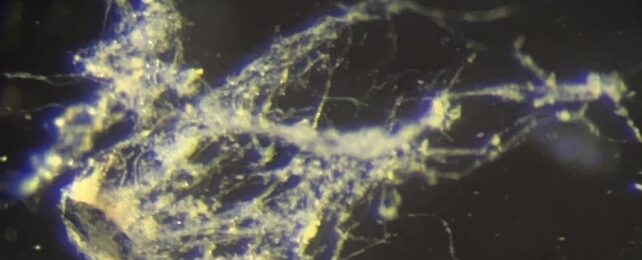A newly discovered bacterium wiggling about in the mudflats of the Oregon coast could advance a new era of bioelectric devices.
It's been named Ca. Electrothrix yaqonensis, in honor of the First Nations Yaqo'n people local to the area it was found, and it conducts electricity just like a wire does. This is not unique, but Ca. Electrothrix yaqonensis has some fascinating traits of its own that set it apart from other conducting microbes.
Collectively, these organisms are known as cable bacteria, and only a handful are known, split between two candidate (Ca.) genera that are yet to be cultured and formally described – Ca. Electrothrix and Ca. Electronema. They live in sedimentary environments, and arrange themselves, end-to-end, in long threads that transport electrons.

The purpose of this is a division of metabolic labor between individual cells in the variably oxygenated environment in which they live. It's a true collective, as bacterial colonies often are, but in a manner uniquely suited to their murky, soggy home.
Even among a peculiar set of species, though, Ca. Electrothrix yaqonensis stands out.
"This new species seems to be a bridge, an early branch within the Ca. Electrothrix clade, which suggests it could provide new insights into how these bacteria evolved and how they might function in different environments," says microbiologist Cheng Li of Oregon State University and James Madison University.
"It stands out from all other described cable bacteria species in terms of its metabolic potential, and it has distinctive structural features, including pronounced surface ridges, up to three times wider than those seen in other species, that house highly conductive fibers made of unique, nickel-based molecules."
Led by microbiologist Anwar Hiralal of the University of Antwerp in Belgium, the researchers isolated and studied the bacterium using genomic, morphological, spectroscopic, and electrical characterization techniques.
Their results revealed that it has some morphological differences from other cable bacteria, as well as genetic similarities to both genera. Among the most important findings were the pronounced ridges, as well as the extracellular sheaths the microbes exude when they form their long, connected strands.

These strands are how the bacteria perform reduction-oxidation reactions over long distances (up to several centimeters). The cells buried deeper in the sediment, where they can't access oxygen, create energy by metabolizing sulfide. This produces electrons, which they transport up to the oxygen-rich layer, where the upper cells use oxygen or nitrate to receive the electrons.
This behavior, the researchers say, is something humans could tap into for purposes such as food safety and environmental cleanup.
"These bacteria can transfer electrons to clean up pollutants, so they could be used to remove harmful substances from sediments," Li says. "Also, their design of a highly conductive nickel protein can possibly inspire new bioelectronics."
Further work can help refine the position of this new species in the cable bacteria family tree, and what we can learn from it.
"Its non-conformist metabolic traits highlight the complex evolutionary dynamics within the cable bacteria clade," the researchers write, "and suggest a broader functional and ecological diversity within this clade than previously recognized."
The research has been published in Applied and Environmental Microbiology.
